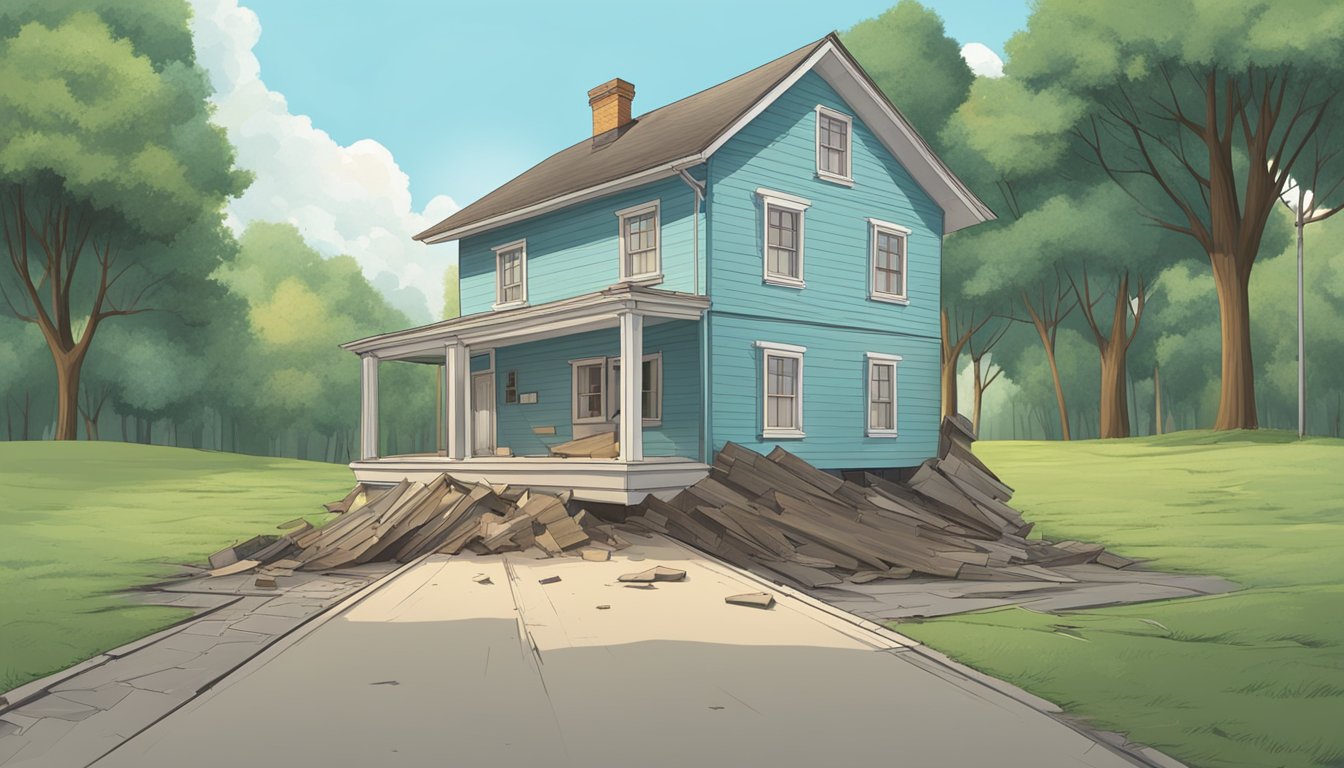Understanding Earthquake Insurance
Earthquake insurance is a type of coverage that protects your property against damages caused by earthquakes.
Unlike standard homeowners insurance, earthquake insurance specifically addresses the unique risks associated with seismic activities.
Earthquake insurance policies often include several coverage types:
- Dwelling coverage: This helps pay for repairs to your home’s structure.
- Personal property coverage: This covers your belongings inside the home.
- Additional living expenses (ALE): This can help cover costs if you need to live elsewhere while your home is repaired.
Deductibles for earthquake insurance are typically higher than those for general homeowners insurance, often ranging from 10% to 20% of the insured value.
If your home has $300,000 in coverage, a 20% deductible would mean you pay the first $60,000 of any earthquake damage before the insurance starts to pay.
In areas with a high earthquake risk, like California, earthquake insurance premiums may be considerably higher.
Homeowners there might consider policies from organizations like the California Earthquake Authority.
A significant earthquake policy feature to understand is its coverage limits.
These are caps on how much the insurer will pay out for a covered loss.
You should review these limits to ensure they align with your home’s value and potential repair costs.
Submitting an earthquake insurance claim follows a distinct process compared to standard claims.
You might need thorough documentation and could face longer processing times due to the extent of damage typically associated with earthquakes.
For more information on the specific terms and definitions related to earthquake insurance, you can explore resources that provide detailed definitions on related topics.
This can help in deciding the best coverage options for your specific needs.
Assessing and Mitigating Earthquake Damages

When assessing earthquake damages, start by inspecting structural damage.
Check the foundation, walls, and masonry veneer for cracks or shifts. Seismic activity can compromise the structural integrity of buildings, so thorough inspections are essential.
Direct damage to your property can include broken windows, damaged masonry walls, and weakened structural elements. Aftershocks may cause further harm, so continuous monitoring is necessary in earthquake-prone areas.
Mitigating earthquake risks requires seismic retrofitting.
This process involves strengthening buildings to withstand tremors.
Upgrades may include reinforcing walls, securing foundations, and bracing chimneys.
Such measures help reduce potential property damage.
Building code upgrades are vital for newer constructions.
These codes ensure buildings can resist seismic events.
Adhering to updated standards enhances safety and minimizes damage.
For example, ensure your property meets local building codes for seismic activity.
Retrofitting existing structures can also mitigate damage.
Techniques include adding steel braces, reinforcing concrete, and ensuring masonry structures can flex without breaking. Engineering solutions for earthquakes offer various methods to bolster a building’s resilience.
Catastrophe modeling helps you understand earthquake risk.
This technique simulates seismic scenarios to predict potential damage and guide prevention strategies.
Use this data to make informed decisions about earthquake insurance and risk management.
Landslides and fire damage triggered by earthquakes also pose risks.
Mitigation includes creating defensible spaces around buildings and using fire-resistant materials.
Proper landscaping can reduce the chance of landslides during seismic events.
Regular structural assessments are crucial for maintaining property safety.
Inspections can identify vulnerabilities and guide necessary repairs.
Utilize services like structural integrity assessments to ensure your property remains secure in the face of earthquake activity.
Implementing these mitigation strategies not only safeguards against damage but also aligns with industry standards, ultimately benefiting your earthquake insurance coverage.
Coverage and Claim Considerations in Earthquake Insurance

When handling earthquake insurance, it’s crucial to understand what your policy covers. Earthquake coverage typically includes property damage, emergency repairs, and loss of use coverage.
Deductibles in earthquake insurance can be high, ranging from 10% to 25% of your coverage limit.
For instance, if your home is insured for $200,000 and your deductible is 15%, you’ll need to cover $30,000 before your insurer pays for damages.
Personal property coverage is another critical component.
This includes damage to belongings like furniture and appliances.
Always maintain a detailed home inventory to ensure you can file an accurate insurance claim.
Additional living expenses provide financial support if you’re unable to live in your home due to earthquake damage.
This can cover hotel stays, meals, and other temporary expenses.
Make sure to understand any exclusions in your policy.
Some insurers may exclude damage from floods.
Clarify these points with your insurance provider to avoid surprises during a claim.
Insurance policies may include loss of use coverage, which means coverage for costs related to living elsewhere while your home is being repaired.
This can be very helpful if you live in an earthquake-prone area.
Finally, the claims process can be complex.
Ensure you have all required documentation, and be proactive in communicating with your insurer.
If disputes arise, consult resources about claim disputes in catastrophes.
Understanding these aspects ensures you’re well-prepared for any eventuality, securing both your property and your peace of mind.






